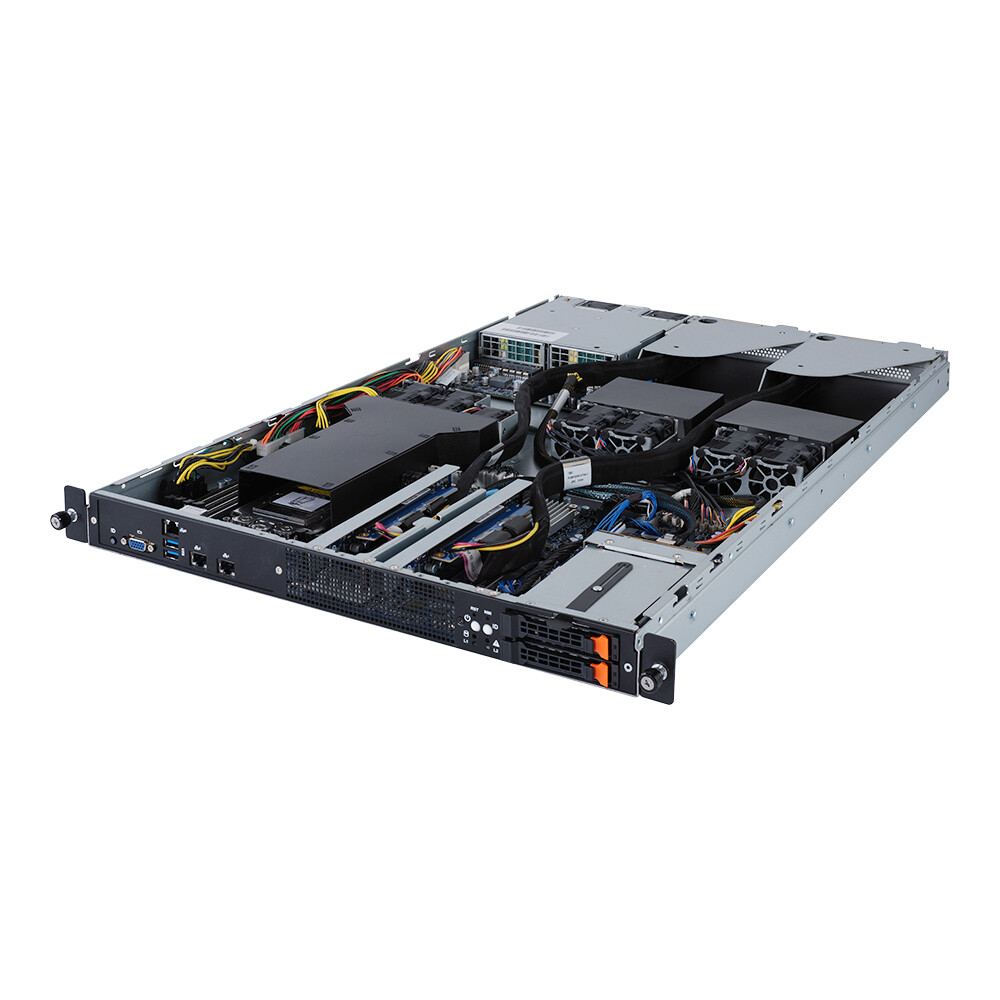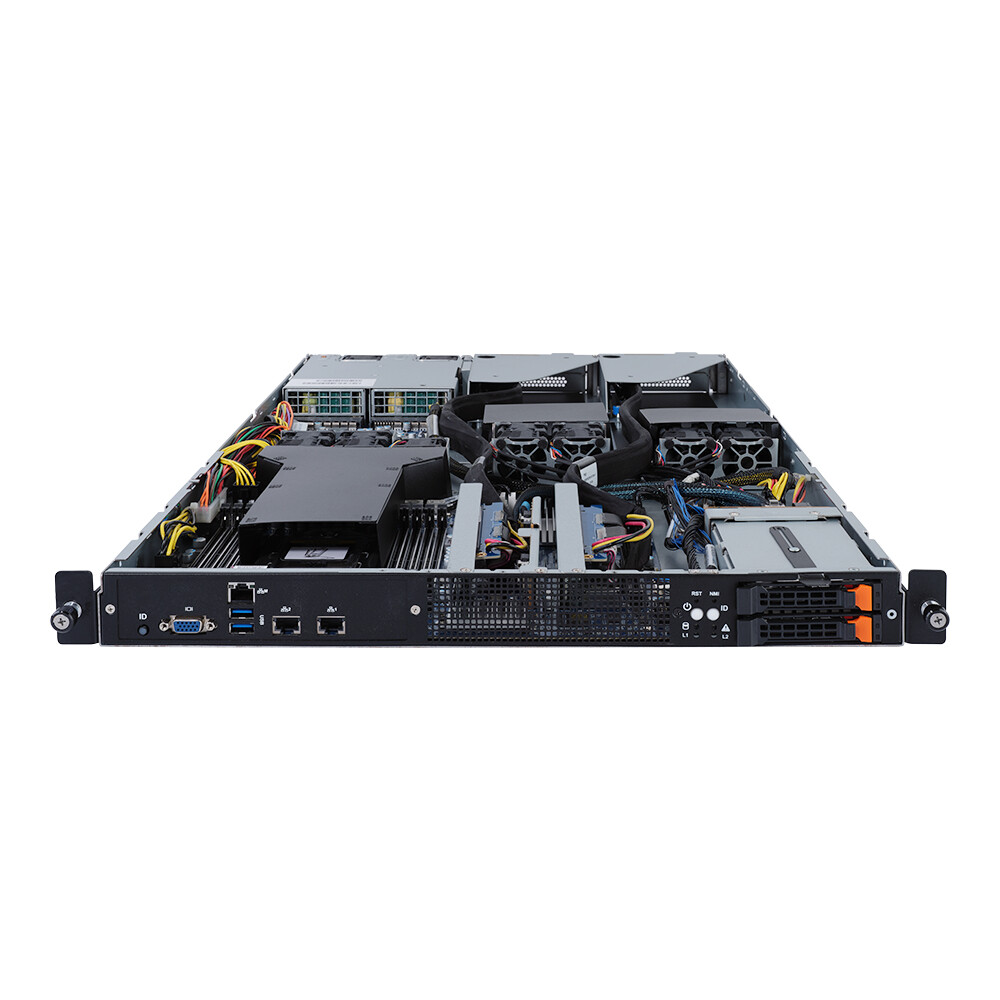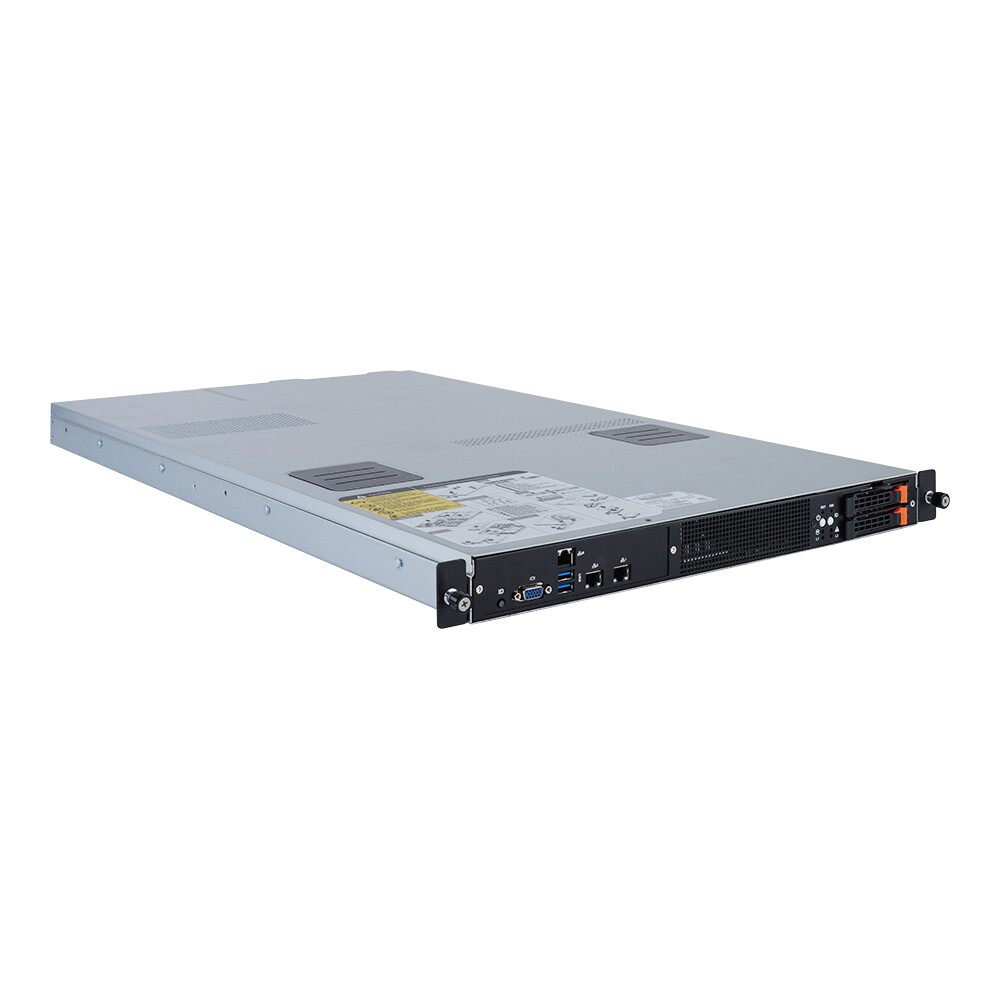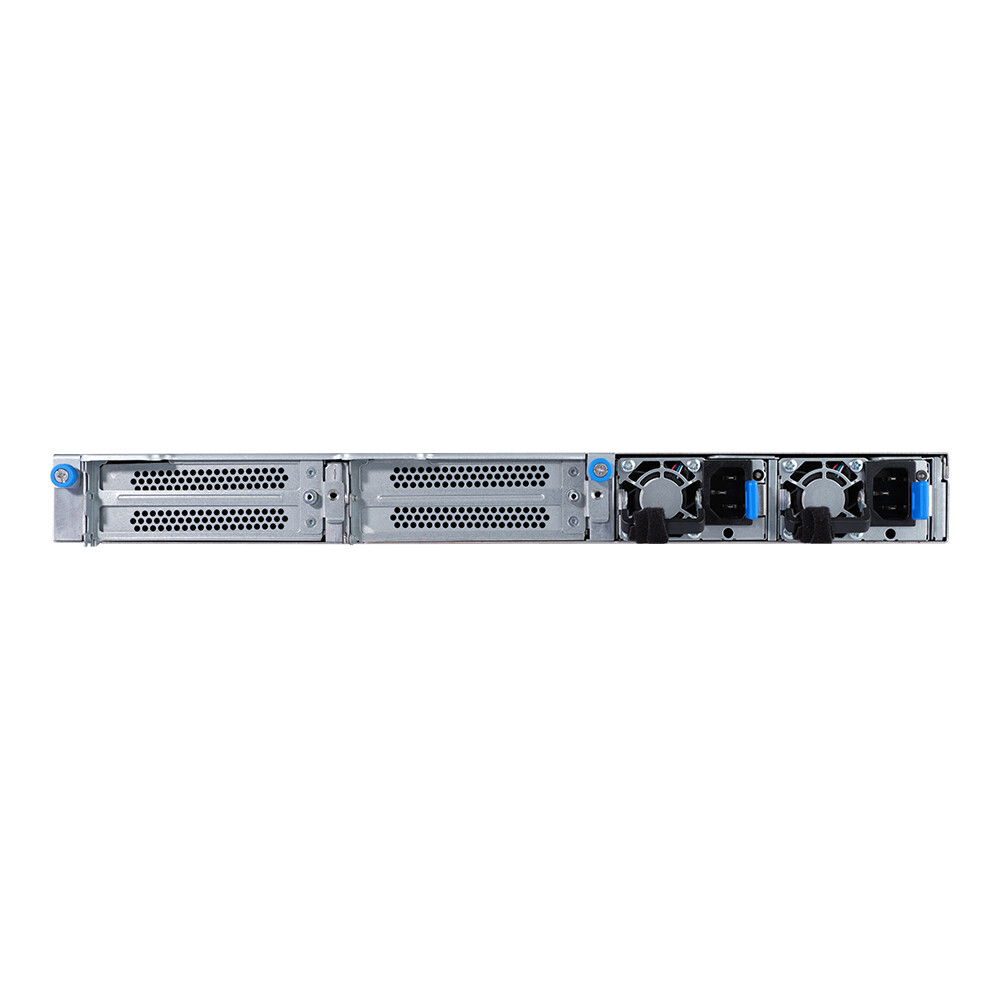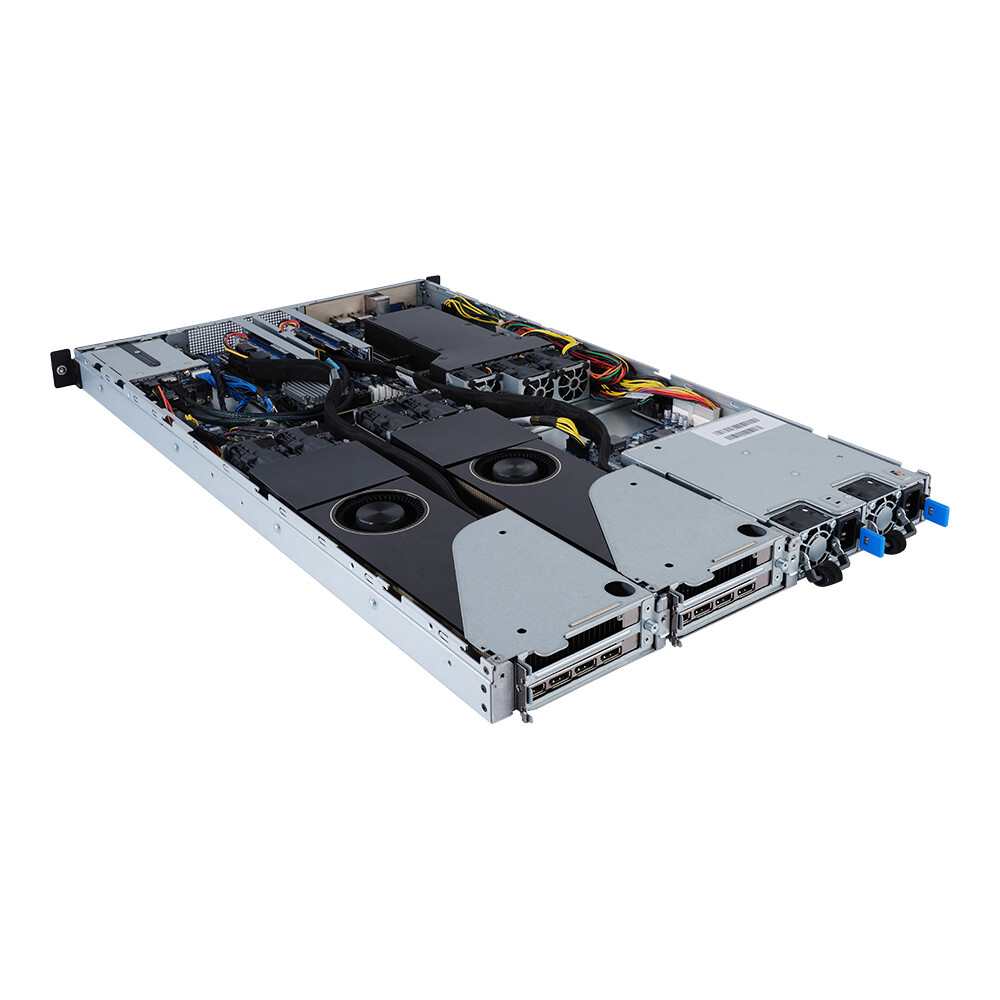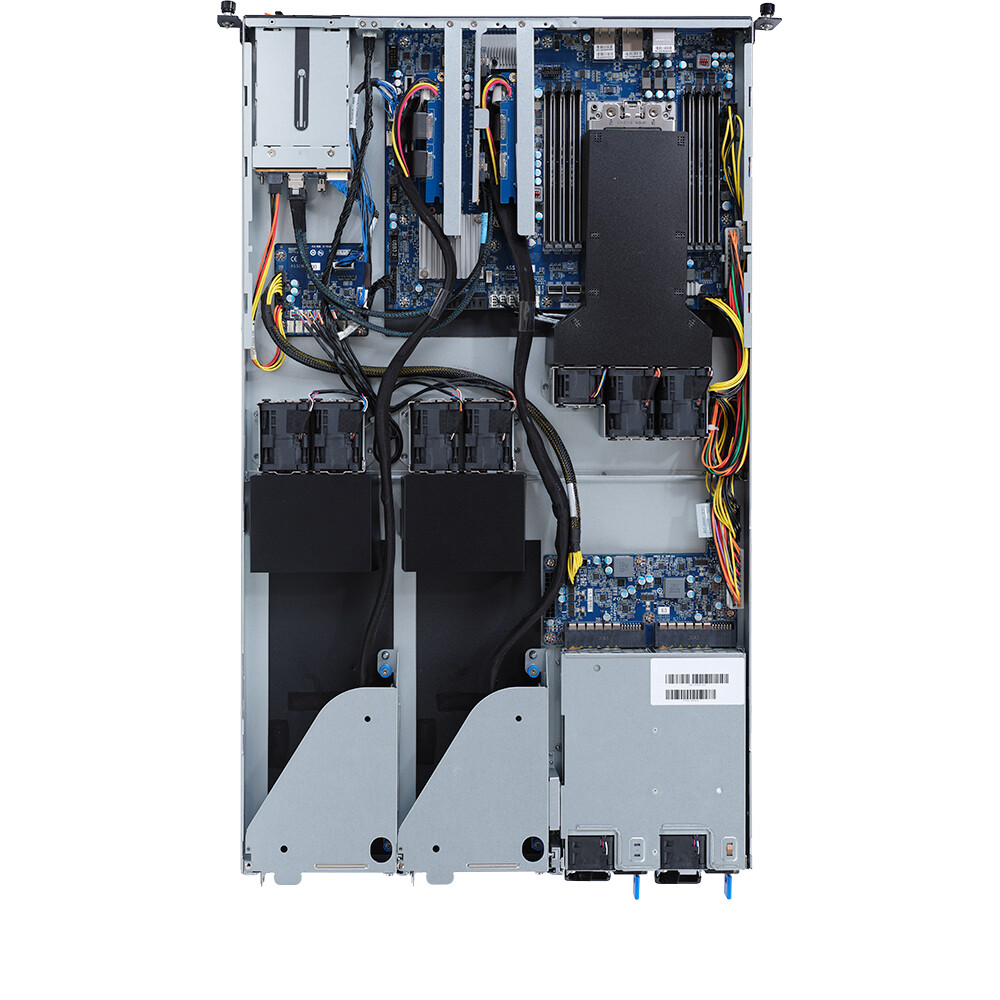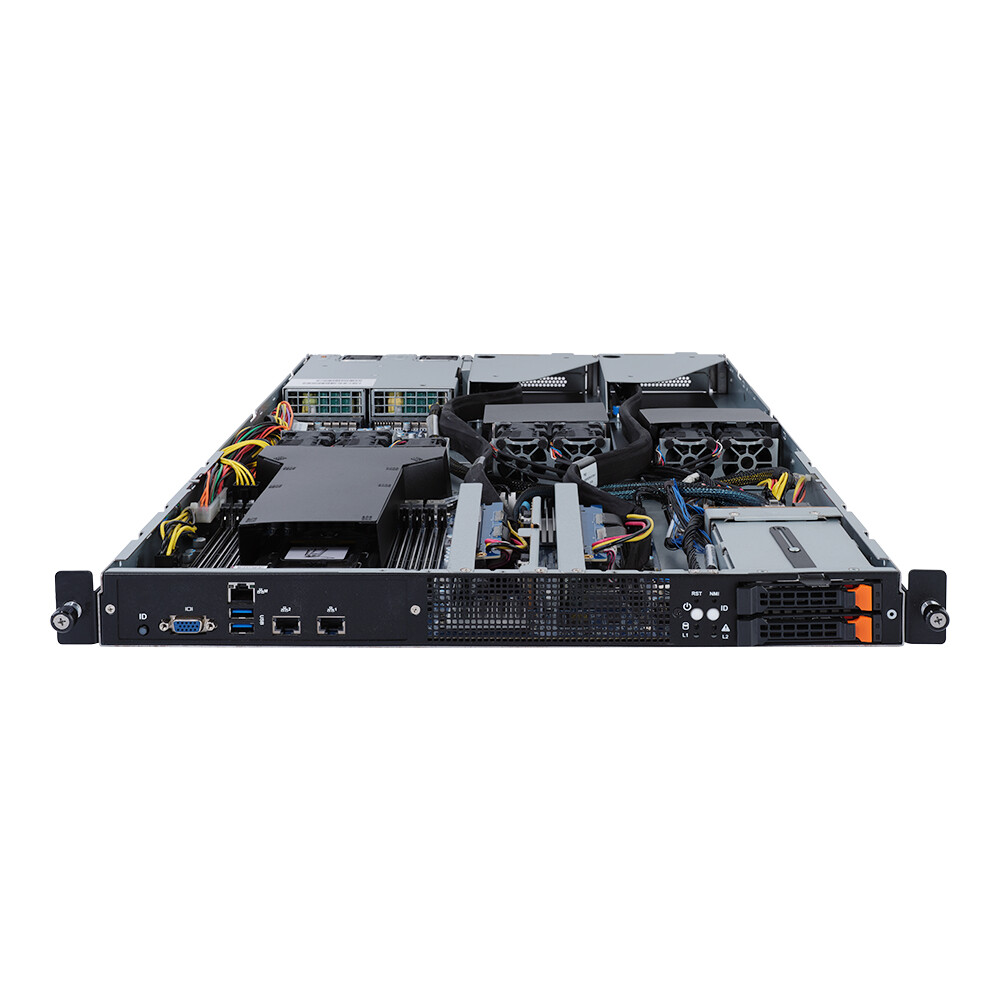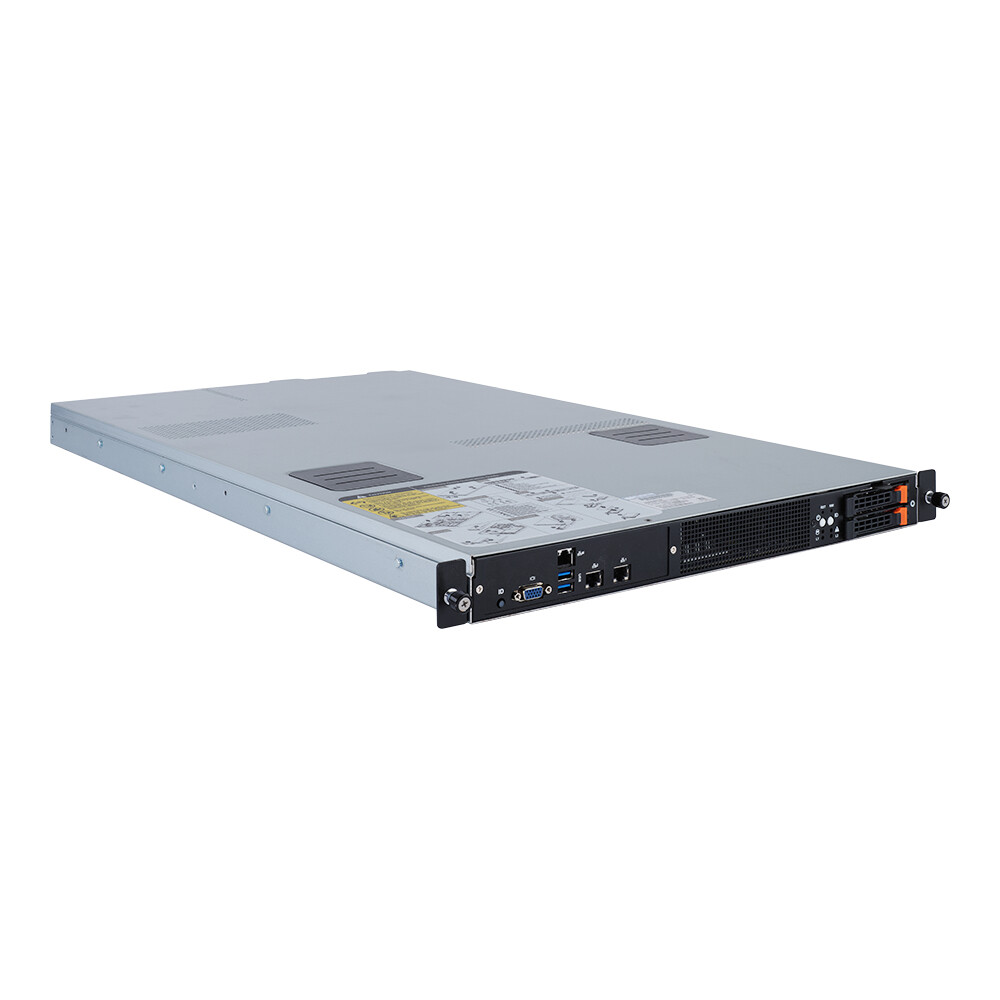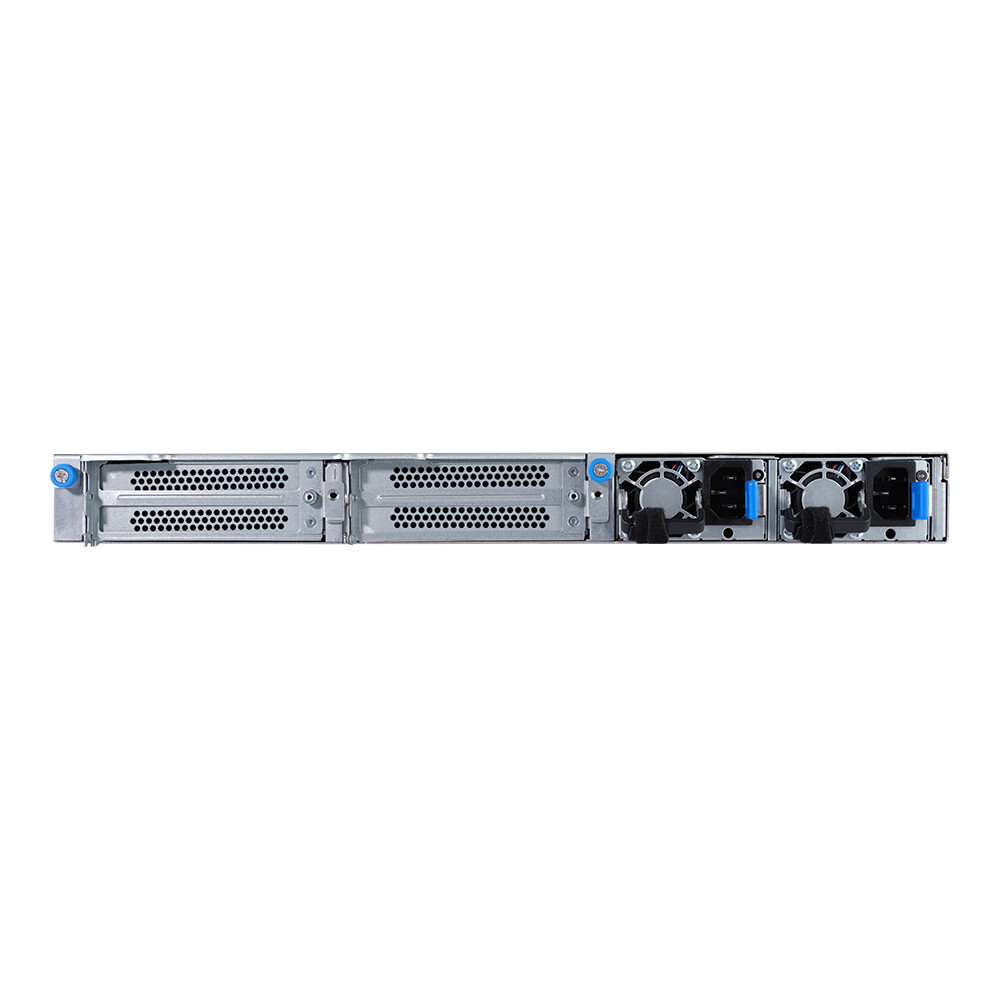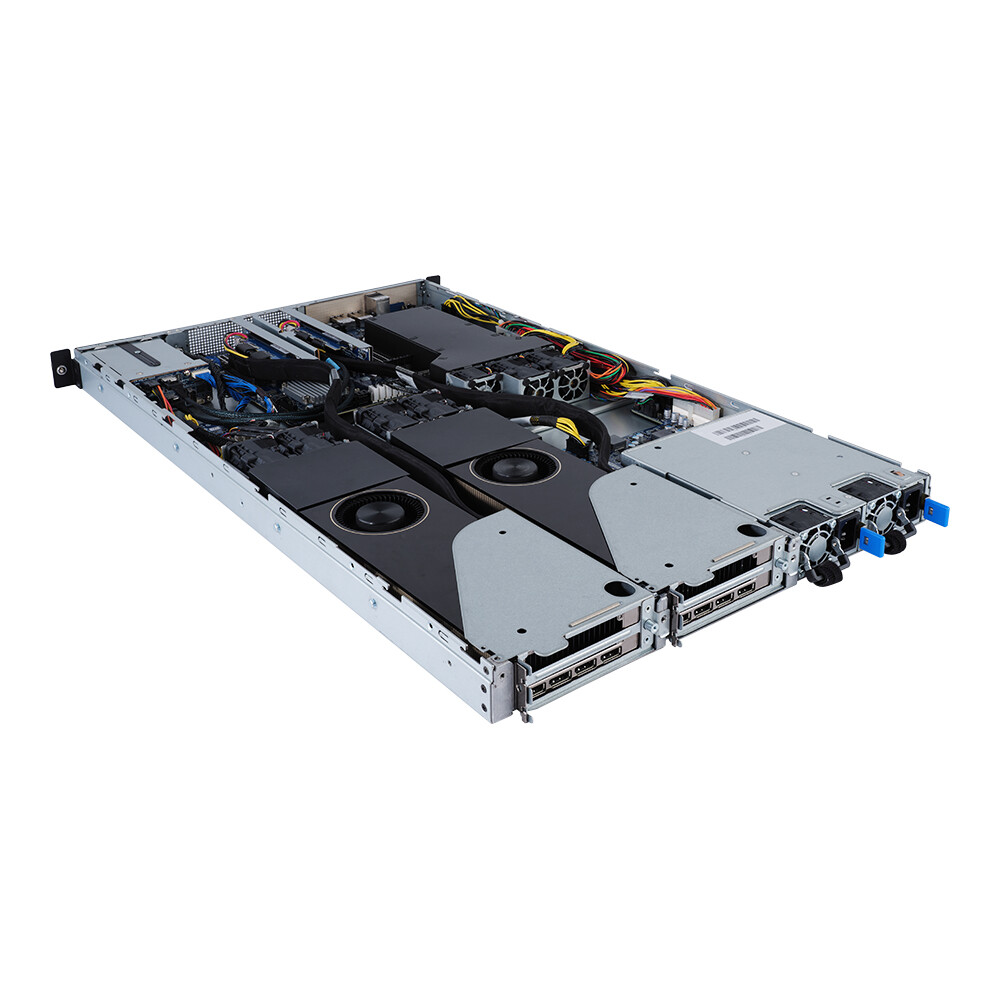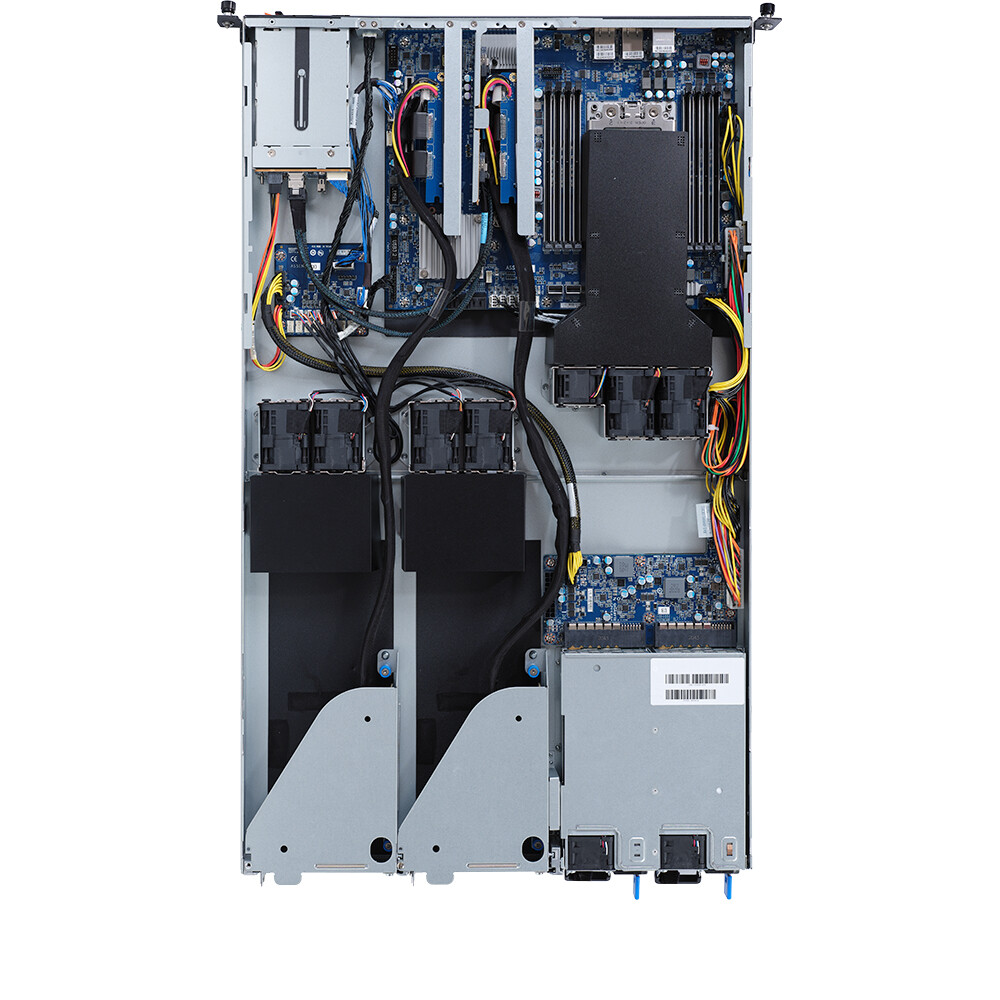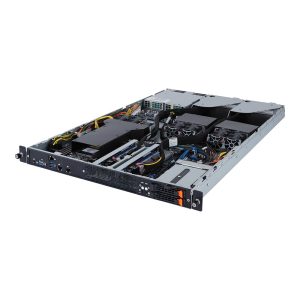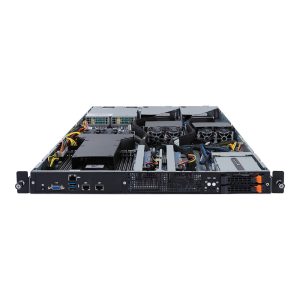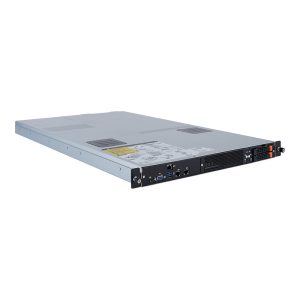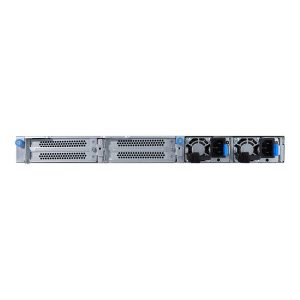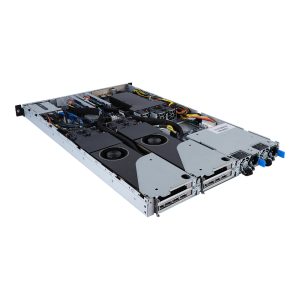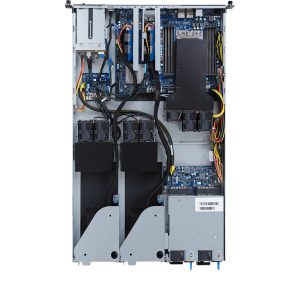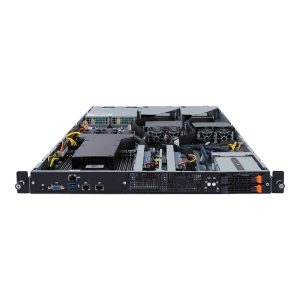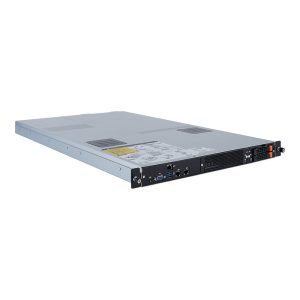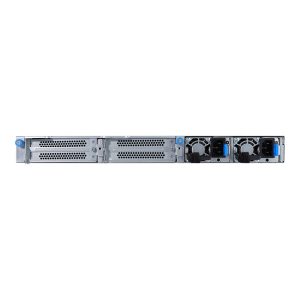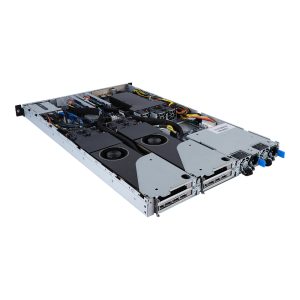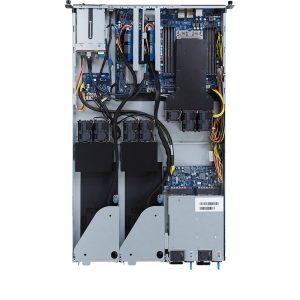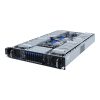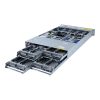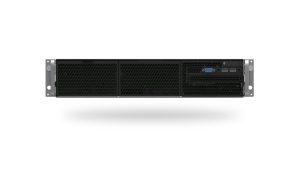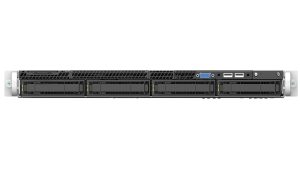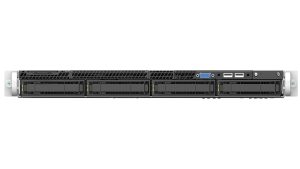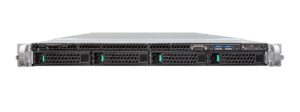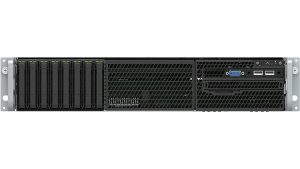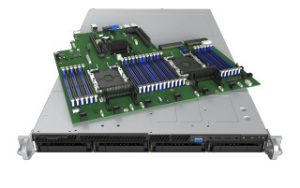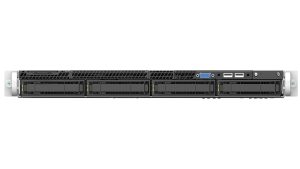Gigabyte G182-C20 AMD TRX40 Socket sTRX4 Stativ (1U) Sort
20.741,25 kr. inkl. moms (ex. moms 16.593,00 kr.)
(1U) Black
Ikke på lager
Giv mig besked når varen kan købes

AMD TRX40 for 3rd Gen Ryzen Threadripper Processors
The 3rd Gen AMD Ryzen Threadripper™ processors are ideal for serious visual effects artists, data scientists, or anyone who needs to work efficiently with compute intensive workloads. The scalable AMD TRX40 chipset offers unprecedented expansion for serious multi-GPUs and NVMe arrays thanks to bleeding-edge PCIe 4.0 connectivity.
High Performance
Supports 2 x Double-wide Accelerators
GIGABYTE servers have been tested and validated across a range of workloads with various computing accelerators designed to deliver high levels of performance for 3D rendering, deep learning and high-performance computing, which enables content creators, data scientists, researchers, and engineers to tackle challenges that were once impossible.
Dual Intel 10GbE Connections
The Intel X550-AT2 adapter provides 2 ports of 10 GbE network connectivity as well as SR-IOV features. It is perfectly designed for demanding high bandwidth applications in virtualization, media centers, content creation, and data centers.
Power Efficiency
Automatic Fan Speed Control
GIGABYTE servers are enabled with Automatic Fan Speed Control to achieve the best cooling and power efficiency. Individual fan speeds will be automatically adjusted according to temperature sensors strategically placed in the servers.
High Availability
Smart Crises Management and Protection (SCMP)
SCMP is a GIGABYTE patented feature which is deployed in servers with non-fully redundant PSU design. With SCMP, in the event of faulty PSU or overheated system, the system will force the CPU into an ultra-low power mode that reduces the power load, which prevents the system from unexpected shutdown and avoids component damage or data loss.
Hardware Security
Optional TPM 2.0 Module
For hardware-based authentication, the passwords, encryption keys, and digital certificates are stored in a TPM module to prevent unwanted users from gaining access to your data. GIGABYTE TPM modules come in either a Serial Peripheral Interface or Low Pin Count bus.
Value-added Management
GIGABYTE offers free-of-charge management applications via a specialized small processor built on the server.
GIGABYTE Management Console
For management and maintenance of a server or a small cluster, users can use the GIGABYTE Management Console, which is pre-installed on each server. Once the servers are running, IT staff can perform real-time health monitoring and management on each server through the browser-based graphical user interface. In addition, the GIGABYTE Management Console also provides:
– Support for standard IPMI specifications that allows users to integrate services into a single platform through an open interface
– Automatic event recording, which can record system behavior 30 seconds before an event occurs, making it easier to determine subsequent actions
– Integrate SAS/SATA/NVMe devices and RAID controller firmware into GIGABYTE Management Console to monitor and control Broadcom MegaRAID adapters.
GIGABYTE Server Management (GSM)
GSM is a software suite that can manage clusters of servers simultaneously over the internet. GSM can be run on all GIGABYTE servers and has support for Windows and Linux. GSM can be downloaded from GIGABYTE website and complies with IPMI and Redfish standards. GSM includes a complete range of system management functions that includes the following utilities:
– GSM Server: A software program that provides real-time, remote control using a graphical user interface through an administrator’s computer or through a server in the cluster. The software allows ease of maintenance for large clusters of servers.
– GSM CLI: A command-line interface for monitoring and managing remotely.
– GSM Agent: A software program installed on each GIGABYTE server node that retrieves information from each system and devices through the OS, and this software integrates with GSM Server or GSM CLI.
– GSM Mobile: A mobile app for both Android and iOS that provides admins with real-time system information.
– GSM Plugin: An application program interface that allows users to use VMware vCenter for real-time monitoring and management of server clusters.
| Vægt | 0,0000 kg |
|---|---|
| Indbygget processer | Ingen |
| Brand | Gigabyte |
| State | Default |
| Bundkort chipsæt | AMD TRX40 |
| Antal understøttede processorer | 1 |
| Antal DIMM-slots | 8 |
| Understøttede hukommelsestyper | DDR4-SDRAM |
| Fejlkorrigerende kode | Ja |
| Antal understøttede lagerdiske | 2 |
| Hot-swap HDD båse | Ja |
| Antal 2.5" bays | 2 |
| Understøttede lagerdisk størrelser | 2.5" |
| Understøttede lagerdrev brugerflader | Serial ATA III |
| Ethernet LAN | Ja |
| Ethernet-grænsefladetype | 10 Gigabit Ethernet |
| Ethernet LAN-porte (RJ-45) | 2 |
| Antal USB 3.2 Gen 1 (3.1 Gen 1) type-A-porte | 2 |
| Antal VGA-porte (D-sub) | 1 |
| Kabinettype | Stativ (1U) |
| Produktfarve | Sort |
| LED-indikatorer | Ja |
| Bredde | 438 mm |
| Dybde | 700 mm |
| Højde | 43,5 mm |
| Processor sokkel | Socket sTRX4 |
| Understøttet RDIMM-clockhastigheder | 2133,2400,2933,3200 MHz |
| PCI Express x16 slots | 2 |
| Harmoniseret systemkode (HS) | 84714100 |
| Strømforsyning | 1600 W |
| Understøttet datalagringsdrev typer | HDD & SSD |
| On-board grafikkort, model | Aspeed AST2500 |
| LAN Kontroller | Intel® X550-AT2 |
| Knap til nulstilling | Ja |
| Antal blæsere | 7 blæser(e) |
| Ventilator diameter | 4 cm |
| 80 PLUS certificering | 80 PLUS Platinum |
| Driftstemperatur (T-T) | 10 – 35 °C |
| Opbevaringstemperatur (T-T) | -40 – 60 °C |
| Relativ luftfugtighed ved drift (H-H) | 8 – 80% |
| Relativ luftfugtighed ved opbevaring (H-H) | 20 – 95% |
| Tænd-/slukkontakt | Ja |
| Pakkebredde | 985 mm |
| Pakkedybde | 588 mm |
| Pakkehøjde | 250 mm |
| Antal af hovedstrømforsyninger | 2 |
| Hukommelseskanaler | Fire-kanals |
| Antal M.2 (M) slots | 1 |
| Ikke-fejlkorrigerende kode | Ja |
